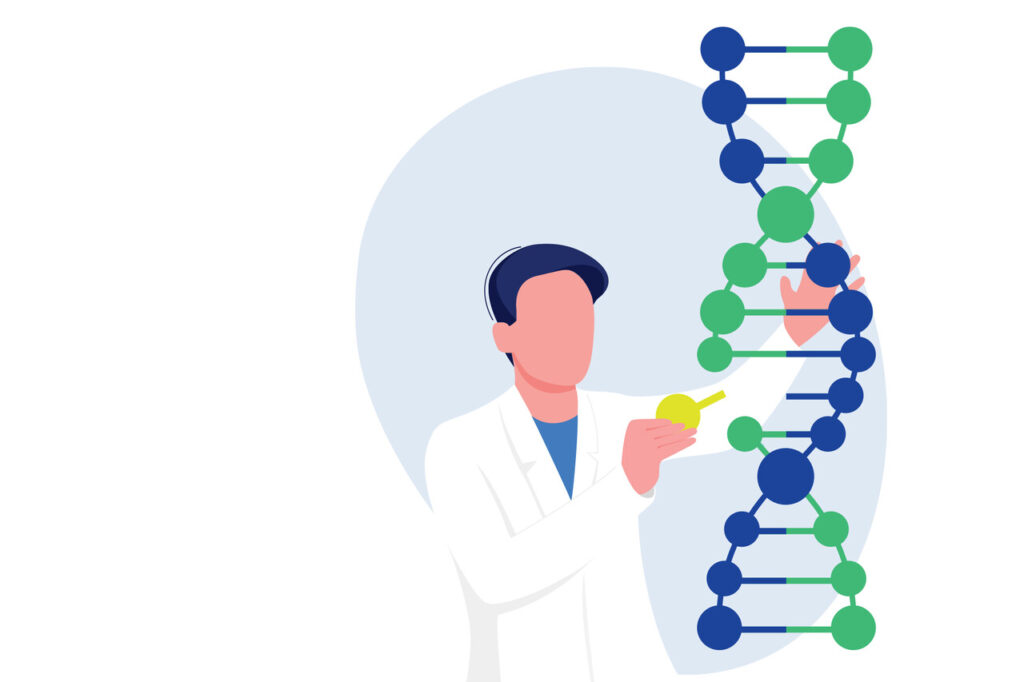Thanks to advances in modern medicine, diseases caused by genetic disorders such as spinal muscular atrophy and retinal defects can be greatly improved or potentially cured using a form of treatment called gene therapy. Gene therapy uses carrier cells like a virus to deliver the new gene into the mutated or missing gene to treat the underlying disease with the patient’s own cells. Gene therapy works by replacing a mutated or missing gene with a healthy one, inactivating a defective gene, or introducing a new gene back into a patient to fight the disease.
What’s out there?
The two gene therapies approved by the FDA today works by replacing a mutated or nonworking gene with a working gene.
Luxturna (Voretigene Neparvovec) treats a rare genetic retinal disorder that causes blindness. Luxturna works by replacing the mutated RPE65 gene with a healthy one and has the potential to restore vision and improve sight. It is a one-time treatment that is injected directly into each eye. The cost is $850,000 WAC.
Zolgensma (Onasemnogene Abeparvovec) treats a rare genetic neuromuscular disorder, spinal muscular atrophy (SMA), which leads to progressive muscle weakness and atrophy. Zolgensma treats the underlying cause of SMA by replacing the missing or nonworking SMN1 gene with a new, working copy of a human SMN gene. Zolgensma is administered as a single IV infusion at a cost of $2.1 million.
What’s next?
There are many clinical trials underway to develop gene therapies for various diseases. Gene therapies are being tested and developed for common diseases such as cardiovascular disease, cancers, and joint degeneration. There are also a significant number of gene therapy studies underway for rare or orphan diseases with limited or no treatment options.
There are a many types of gene therapies in various stages of development for Hemophilia. Research data indicates that hemophilia may be highly responsive to gene therapy. Production of even a small amount of factor which is missing in hemophilia may be enough to convert the disease from life-threatening bleeding into a minor-bleeding disorder. Hemophilia treatment goals do not require normal factor levels; instead, conversion from severe to a mild hemophilia maybe considered curative. There are several gene therapy products for hemophilia in late stage development. BioMarin’s Valoctocogene Roxaparvovec (ValRox) is the furthest along and is expected to gain approval during the 2nd half of 2020 to treat hemophilia A. Fidanacogene Elaparvovec by Pfizer is in Phase III trials to treat hemophilia B.
Here are some other areas where gene therapies are in late-stage development:
- LentiGlobin BB305 by Bluebird Bio, is currently in Phase III development to treat beta thalassemia.
- GS010 by GenSight is in Phase III trials for Leber’s Hereditary Optic Neuropathy
- Invossa by TissueGene is in Phase III trials to treat osteoarthritis
- pIL-12 by OncoSec is in Phase III trials for metastatic melanoma
- Lenti-D by Bluebird Bio is in Phase III trials for cerebral adrenoleukodystrophy (CALD)
Why so much?
Many gene therapies in development are for one-time administration, since the intent is to develop a potential cure by correcting the underlying genetic defect of the disease. The high cost of current gene therapies is limiting patient access. There are several reasons driving these huge price tags for gene therapy:
- Curative potential
- Complexity of administration
- Total cost of current treatment over time (if available), and
- rarity of the disease is factored into the cost
For example, we expect the cost of gene therapy for hemophilia to be extremely high, given the already high cost of current treatments that must be administered throughout the patient’s lifetime. Gene therapies for the more common diseases would likely be less costly than treatments for rare diseases that have limited and/or no treatment options.
How will patients afford gene therapy?
Gene therapy may provide a huge treatment advance for patients, but at the same time present a significant financial impact for payors. Current gene therapy treatments and many in the pipeline are for extremely rare disorders. Innovative payment solutions will be needed for patients to gain access to these therapies.
Payment models being used for current gene therapies include using an installment plan that would allow payors to spread out the cost over several years. Ideally, an option to continue these installment payments would be available for patients that change insurers. Another payment model might use outcomes-based contracting. The therapy’s manufacturer would reimburse part of the treatment cost if certain treatment milestones are not met. For this to work, the manufacturer and payor must agree on what is considered treatment success, how effectiveness will be measured, and what the value of successful treatment would be. The makers of Luxturna and Zolgensma use variations of these two solutions along with some other “tweaks” in their payment models.
There are health plan payors that will include gene therapy coverage through the medical benefit for fully insured and ASO groups. The gene therapy will need to comply with the plan’s treatment criteria and member cost-share responsibility must be met. Many payors may not cover gene therapy, or they will make patient access extremely difficult to avoid cost. Because, if and when a payor has to cover the cost of gene therapy, that one-time cost would bust their budget, especially for smaller employers and self-insured plans. Financial protection programs may help mitigate the financial risk. A strong, effective stop-loss policy may help contain costs for self-insured employers, if it covers gene therapy.
The big integrated PBM/Insurance companies are offering financial protection programs as well. Third-party payors such as employers, insurers, HMOs, and health plans, are charged a fixed per-member, per-month amount. These third-party companies act like an exclusive, in-network provider and distributes the drug to the patient or provider through a network of specialty pharmacies and specialty distributors.
Other companies offer Stop Loss coverage specifically for gene therapy. This offers self-insured clients without stop-loss financial protection against unexpected, high-cost gene therapy claims. The cost of these programs varies depending on the individual stop loss plan chosen. Many others are also considering developing programs that may include reinsurance or stop-loss options for gene therapy payors and patients.
Gene therapy not only signals a new age in treating and potentially curing rare genetic diseases, but it will begin a shift in how to gain access to these ultra-high cost treatments. The time to think about this is now! By 2025, the FDA predicts they will be approving 10-20 gene therapies per year! Payors and patients will need to look for ways to spread out and manage the high cost of these gene therapies, for small treatment populations, which they may or may not incur. In the meantime, understanding your patient population and the gene therapy pipeline will help decide which of these financial protection programs will be right for you.







